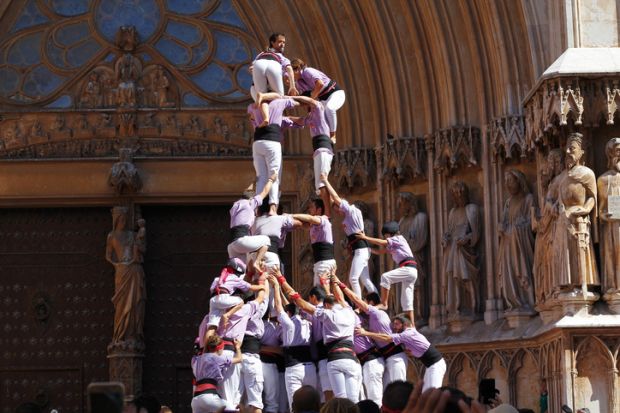The US Supreme Court’s ruling against race-based admissions at the end of last month was both the culmination of a decades-long trend and a fundamental misreading of US legal, social and political history.
The 6-3 partisan vote contradicts the national majority sentiment (expressed in multiple surveys) and fails in basic logic and common sense. I refer any sceptical readers to the texts of the decisions; Clarence Thomas’s cites sources that were repudiated decades ago. Given this shocking ignorance, I am surprised that affirmative action, in any of its many forms, lasted as long as it did.
But the mechanism’s demise has also been hastened by the gradual narrowing of its supporters’ understanding of what it actually means.
The struggle for affirmative action grew out of the civil rights movements – plural – whose modern forms began in the 1930s, with Black railroad workers’ unionisation and intellectuals’ gaining of voice and recognition. The movements accelerated in recognition of both service and discrimination during the Second World War, and again after Brown v. Board of Education (the Supreme Court’s 1954 decision to end school segregation) and the 1960s civil rights achievements.
I remember well the first major campaigns for affirmative action in the late 1960s and early 1970s. I was a student at the time, and my convictions and hopes for the US made me willing to campaign against my own narrow self-interests. As a relatively rare white, heterosexual male in the movement, I was sometimes vilified by those I supported. But I understood.
Crucially, we understood that affirmative action meant equal opportunity for all – with the greatest commitment to the under-represented, marginalised and illegally discriminated against. And we did not just make a moral case. We also made legal arguments based on several articles of the constitution, including but not limited to the 14th Amendment’s provision of equal protection under the law for all citizens. That Civil War landmark (whose own grounds were legal, historical and contextual) is now radically misrepresented by the Supreme Court’s right-wing – not conservative – majority, who have erased its historical contexts and its inseparable connection with race.
But affirmative action was misrepresented by its opponents almost from the start. The national attacks began in the mid- to late-1970s, and programmes were diluted, distorted, distracted and cancelled over the ensuing decades.
The Supreme Court’s 1978 Bakke ruling that the use of racial quotas in admissions to the University of California, Davis medical school was unconstitutional was only one retreat among many, each more misconceived and illogical than its predecessor. Complete, reliable data demonstrating discrimination against white applicants have never been revealed: not in the late 1970s and not during the last three years of legal attacks on affirmative action at Harvard and the University of North Carolina.
But the biggest step backwards was affirmative action supporters’ retreat from equal opportunity to a focus on a never well-defined “diversity”. This narrowed the scope of the targeted population – thereby also narrowing its support – and restricted the range of relevant policies and actions.
In fact, that retreat opened the door for the radical right wing’s manipulation of Asian-American students in the latest Supreme Court case by Edward Blum’s well-financed Students for (Un)Fair Admissions. That group has never produced the data on which its assertions of reverse discrimination against Asian students stand – though the court’s majority, of course, do not consider themselves to need facts to ground their opinions.
Sadly, non-minorities, including many universities, the Democratic Party and others, have been inconsistent public supporters of affirmative action. The contradictions are many. For example, one major public university has offices and officers for diversity and inclusion but not equity. Many institutions never developed specific programmes with defined goals, detailed plans, timetables and budgets. Thus, promises remained aspirational and easily subject to criticism. Empty slogans – like those that overflow from throats and opinion essays now – never meet the short or long-term needs.
After 50 years of affirmative action, then, and nearly 100 since the beginning of the civil rights movement, we are back in a dark place. The future is more uncertain, not only for student populations in need of specific support but also for universities and the wider society and economy that rely on the calibre and fair representation of their graduates.
Harvey J. Graff is professor emeritus of English and history, Ohio eminent scholar in literacy studies and academy professor at Ohio State University. His most recent book is Searching for Literacy (2022).
Register to continue
Why register?
- Registration is free and only takes a moment
- Once registered, you can read 3 articles a month
- Sign up for our newsletter
Subscribe
Or subscribe for unlimited access to:
- Unlimited access to news, views, insights & reviews
- Digital editions
- Digital access to THE’s university and college rankings analysis
Already registered or a current subscriber? Login








